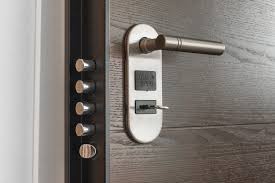When it comes to home security and convenience, the door latch often gets overlooked. Yet, it plays a critical role in protecting your family and belongings. A good latch not only secures your doors but also enhances their functionality and style.
Imagine returning home after a long day, knowing that your door is secure with a reliable latch. It’s more than just a mechanism; it’s peace of mind. With so many options available today, choosing the right door latch can feel overwhelming. This guide will walk you through everything you need to know about selecting the perfect one for your needs.
From understanding different types of latches to tips on installation and maintenance, we’ve got you covered! Let’s dive into the world of door latches together and uncover what makes each type unique. Your home’s safety deserves nothing less than perfection!
The Importance of a Door Latch
A door latch is more than just a simple mechanism; it’s a vital guardian of your home. It provides security, ensuring that unauthorized individuals stay out while keeping your family safe inside.
Beyond safety, latches contribute to the overall functionality of doors. They allow for smooth operation and can enhance privacy in bedrooms and bathrooms. A well-functioning latch ensures that you can enter or exit without hassle.
Additionally, door latches come in various styles and finishes, adding an aesthetic touch to your entryways. The right choice can complement your decor while serving its essential purpose effectively.
In homes with children or pets, reliable latching systems provide extra peace of mind by preventing accidental escapes or unwanted access to certain areas. Investing in quality latches not only bolsters security but also enhances everyday convenience and comfort within the space you call home.
Types of Door Latches
Door latches come in various styles, each serving a distinct purpose. Understanding these types can significantly enhance your home’s security and functionality.
A sliding bolt latch provides extra protection. It’s simple yet effective for securing doors from the inside. This type is often found on shed or garage doors.
For interior use, privacy latches are common. They allow you to lock a door temporarily while still being easy to open from the outside in case of emergencies.
Deadbolt latches offer robust security for exterior doors. These typically require a key or thumb turn to operate, making them ideal for safeguarding against intruders.
Hook and eye latches are versatile options that work well on gates or cabinets. They’re easy to install and provide an added layer of safety without complicated mechanisms. Each latch type has its unique benefits tailored to specific needs around your home.
Factors to Consider When Choosing a Door Latch
When choosing a door latch, you should first consider security. It’s essential to select a latch that provides adequate protection against intruders.
Next, think about the material. Stainless steel offers durability and resistance to rust, while brass can add an elegant touch. The choice of material may affect both longevity and appearance.
Don’t forget compatibility with your door type. Ensure the latch fits seamlessly into your existing setup for optimal functionality.
Another aspect is ease of use. A well-designed latch should operate smoothly without excessive force. Look for options that provide both convenience and reliability.
Aesthetics matter too! The design should align with your home’s style—whether it be modern or traditional—to enhance its visual appeal without compromising on performance.
Installation for Different Types of Door Latches
Installing a door latch can vary based on the type you choose. Each design has its own specific instructions, and it’s essential to follow them closely.
For a spring bolt latch, start by marking the placement on your door frame. Use a chisel to create recesses for the latch and strike plate. Once fitted, secure it with screws.
Deadbolts require more precision. You’ll need to drill holes through the door for both the cylinder and tailpiece. Ensure they align perfectly before inserting your deadbolt.
If you’re using an electronic latch, installation may involve connecting wires or fitting batteries in addition to standard mounting procedures.
Always check that each latch operates smoothly after installation. Adjustments might be necessary if there’s any misalignment or resistance when closing the door securely.
Maintenance and Upkeep of Door Latches
Maintaining your door latches is crucial for ensuring they function effectively and last longer. Regular inspections can help you spot any signs of wear or damage early on. Check for rust, corrosion, or loose screws that may affect the latch’s performance.
Cleaning should be a part of your routine. Use a damp cloth to wipe away dirt and debris from both the latch and its surrounding areas. For metal latches, consider using a specialized cleaner to prevent buildup that could impede their movement.
Lubrication plays an essential role too. Apply a silicone-based lubricant or graphite powder periodically to keep mechanisms running smoothly. Avoid oil-based lubricants as they can attract dust and grime over time.
If you notice the latch sticking or not catching properly, adjust it immediately rather than letting it slide into disrepair. Sometimes, simple adjustments are all that’s needed to restore functionality.
Don’t neglect the environment around your doors. Ensure weather stripping is intact so moisture doesn’t compromise your door hardware’s integrity.
Taking these steps will help ensure that your door latches remain reliable fixtures in maintaining security at home while providing peace of mind.





